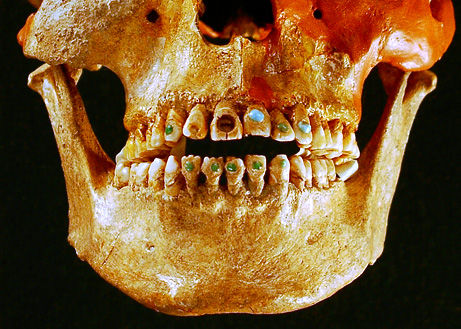Physicist Richard Firestone proposes in his book "The Cycle of Cosmic Catastrophes" that:
Firestone said:Our early ancestors had only type O blood. Around 40KYA mutations likely occurred creating blood types A and B. Types A and B blood are from dominant genes, so they spread through the population and became more common.
DNA evidence suggests that B type blood probably originated in Central Asia or Africa, where the percentage is uniformly highest. Because the percentage is still very low in Australia and the Americas, it seems unlikely that it originated in either of those two places. Some geneticists conclude that type B is the youngest blood type, which appeared no earlier than 15KYA and later than 45KYA, and if so, this distribution seems inconsistent with early Americans originating in Asia and traveling across the Bering land bridge. If they had done so, there would be a lot more type B in the Americas.
For type A blood, the picture is more complicated, with apparent origins in Europe, Canada, and Australia. Again, there is little evidence that type A spread from Asia to the Americas. Instead, paradoxically, it appears to have arrived in the Americas from Europe long before Columbus did.
Is it possible that the Indians came from Europe? That idea seems far-fetched according to traditional views, and yet, according to Dennis Stanford, of the Smithsonian and Bruce Bradley, there is intriguing evidence connecting Clovis flint-knapping technology to the Solutrean flint technology in Spain at the end of the Ice Age. In addition, Clovis points are very unlike flint points from Asia, their supposed land of origin. Since blood types show a connection with Europe, perhaps there is one rather than Asians, maybe the Solutreans really discovered the New World - or perhaps others did, because, remarkably, recent studies of early South American skulls suggest aboriginal or African origins.
Although type O blood is common everywhere, it is nearly universal among natives of South and Central America, and much more common in North American than in Asia or Europe. If people populated the Americas from Asia at the end of the Ice Age after types An and B arose, those people neglected to bring their normal distribution of blood types with them.
Another blood-typing system has been used to demonstrate the Asian origin of Native Americans. Called Diego, it evolved recently as a mutation, and all Africans, Europeans, East Indians, Australian Aborigines, and Polynesians are Diego-negative. East Asians and Native Americans are the only people that are Diego-positive. But Diego-positive is more common among Native Americans than among East Asians, raising the question of who got these genes first. From blood types alone, a case can be made that the oldest indigenous people are the Native Americans!



